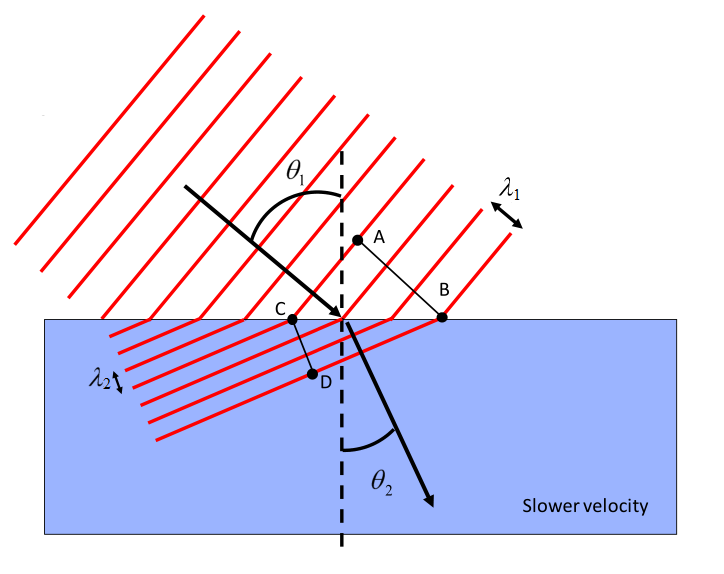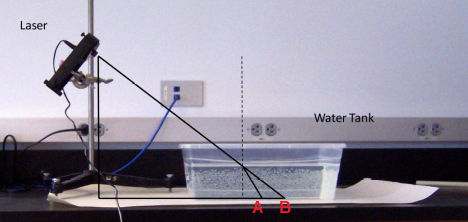Refraction in Water
Tasks/Objectives
- Shine a laser beam at an angle into a container of water and measure how much the laser is refracted from its original path.
- Calculate the index of refraction of water from your measurements.
Resources
- Laser clamped to a ring stand
- Clear plastic container full of water
- Ruler, meter stick
- Protractor
- Paper, masking tape
Background
Light can be thought of as both a wave in electric and magnetic fields traveling through space, or as a stream of photons. Both are useful models in certain situations. The wave model is useful for explaining the effects of refraction and polarization.
Refraction occurs because light travels at different speeds in different materials. The ratio between the speed of light in a material and its speed in a vacuum is the material’s index of refraction n. When a wavefront hits a boundary at an angle \theta_1 with the normal, the wavefronts get closer or farther apart depending on the difference in wave speed. Because the particles that make up the wave are interacting, the parts of a wave (i.e. the crests and troughs) must stay in contact, which forces the wave to bend by an angle given by n_1 \sin\theta_1 = n_2\sin\theta_2
Guideposts/Hints
You may devise your own preferred method of finding the angles of incidence and refraction the laser makes with the water/air surface, but the following suggestion may help: Mark a spot on a piece of paper and tape it to the table. Set the water container on top of the paper and move the stand holding the laser until the laser lands on the spot. Move the tank and make a second mark where the laser now falls. In the diagram below, the first and second spots will be at points A and B, respectively. Use trigonometry to figure out the angles (Hint: you will need to measure some heights and distances).

